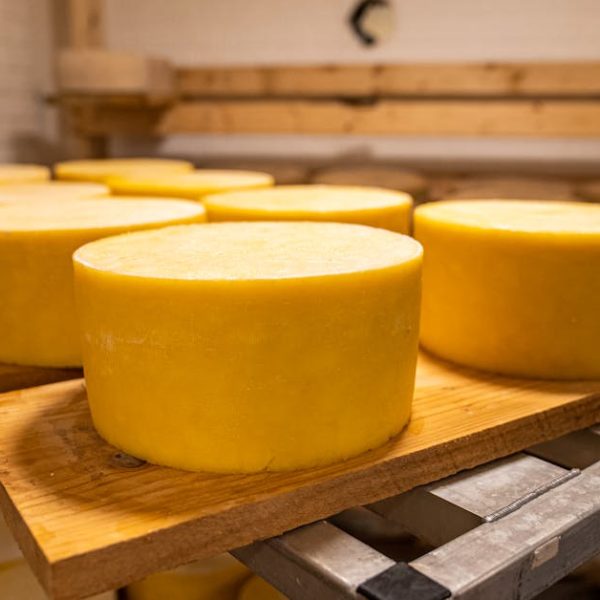Blue cheese, largely recognized for its distinctive aroma and flavor, is a true culinary delight for avid cheese lovers. However, preserving it in a way that maintains its quintessential qualities can sometimes pose a challenge. With proper knowledge and techniques, you can easily store blue cheese without compromising its taste and texture, effectively extending its lifespan beyond the standard shelf-life.
Understanding Blue Cheese and Its Shelf Life
Blue cheese is incredibly unique and stands out amongst its fellow cheese variants, thanks to the specific strains of mold — Penicillium roqueforti or Penicillium glaucum — used in its production. These contribute to its characteristic blue veining, bold flavors, and pungent aroma. Typically, blue cheese can last up to four weeks if properly stored. However, factors such as the original production date, handling, and storage conditions can either extend or shorten this period.
When you’re contemplating buying blue cheese in bulk, consider these points:
- Pros: Buying in larger quantities often saves money and ensures you have plenty on hand for various recipes and cheeseboards.
- Cons: Blue cheese, even when properly stored, can lose its optimal flavor over time. The risk of waste also increases with larger quantities.
The Right Temperature And Humidity For Blue Cheese Preservation
To maintain the quality and flavor of your blue cheese, it is crucial to store it under proper conditions. The ideal temperature range lies between 35 to 45 degrees Fahrenheit. As for humidity, it should ideally be kept at about 70-75% to prevent the cheese from drying out while averting excessive moisture that can lead to spoilage.
Here’s how you can achieve these conditions at home:
- Your refrigerator, particularly the vegetable crisper, provides a suitable environment for storing blue cheese since it maintains cool temperatures and offers higher humidity than other parts of the fridge.
- For temperature control outside the refrigerator, consider purchasing a dedicated cheese cave or a wine fridge.
Proper Packaging Techniques To Store Blue Cheese
The packaging method employed has a significant impact on blue cheese preservation, as improper techniques can lead to flavor loss or quick spoilage. Generally, waxed or parchment paper, aluminum foil, and tight-lid containers are recommended for storing blue cheese.
Checklist for Blue Cheese Packaging:
1. Wrap your cheese loosely in waxed or parchment paper, creating a small enclosure.
2. Encase the parchment-wrapped cheese in aluminum foil to protect against moisture.
3. Store the packaged cheese in a tight-lid container to prevent the strong aroma from permeating other stored foods.
Identifying Spoiled Blue Cheese And When To Discard It
Identifying spoiled blue cheese is important to prevent unwanted consumption. Typically, harmful signs of spoiling are indicated by changes in the cheese’s appearance, smell, and texture. The natural blue or green veining in the cheese is harmless; however, other mold colorations such as black, red, or brown may signify spoilage. Additionally, a strong ammonia smell or slimy texture are also indicators that the cheese is past its prime.
Let’s visually compare healthy blue cheese with spoiled cheese:
| Healthy Blue Cheese | Spoiled Blue Cheese |
|---|---|
| Exhibits blue or green veining | Shows black, brown, or red spots |
| Maintains a pungent, yet pleasant aroma | Exudes a strong ammonia-like smell |
| Textured yet not slimy | Feels slimy or overly soft |
Saving Leftover Blue Cheese For Future Use
Even the leftover blue cheese, in small quantities, can be stored for future use if done correctly. This gives you the convenience to use it for enriching your recipes or pairing with savories anytime you want.
Follow these best practices to store your leftover blue cheese:
- Always keep leftover blue cheese wrapped in a fresh piece of parchment paper. Never use the same wrapping as mold and bacteria can build-up.
- Store in a sealable container to prevent the cheese from absorbing other odors from your fridge.
- Do not crumble or grate the cheese until you’re ready to use it. This helps to preserve its natural moisture and flavor.
- Remember not to freeze the blue cheese as it can alter its texture and flavor.
These tips ensure that your blue cheese retains its optimal flavor while extending its shelf life, allowing you to relish your favorite cheese whenever you fancy!
Key Takeaway:
- Blue cheese, with its distinctive characteristics, can last up to four weeks when preserved correctly.
- The ideal conditions for blue cheese storage are temperatures between 35 to 45 degrees Fahrenheit and around 70-75% humidity.
- Correct packaging methods such as using waxed or parchment paper, aluminum foil, or tight-lid containers are critical to preserving its flavor and freshness.
- Identifying spoiled blue cheese is crucial; harmful mold colorations like black, red, or brown, a strong ammonia smell, or a slimy texture are indicators of spoilage.
- Leftover blue cheese, stored correctly, can also be used for future culinary endeavors.
The act of preserving blue cheese may initially seem daunting, but by following these tips, you can ensure that your blue cheese stays fresh, delicious, and safe to consume for a longer period of time. Embrace the art of cheese preservation, savor the refined flavors of blue cheese, and create memorable tasty delights from your kitchen.
FAQs
Q: Is it safe to eat the blue mold in blue cheese?
A: Absolutely! The blue or green mold found in blue cheese is a result of specific harmless mold strains used during the cheese’s production. It is completely safe to eat and contributes to the unique flavor of blue cheese.
Q: Can I still eat blue cheese if it has been left out for a few hours?
A: Cheese can generally stay out for up to 2 hours without spoiling. However, if it has been kept out for a longer duration, especially in warmer temperatures, it’s best to err on the side of caution and discard it.
Q: Why is it recommended to not crumble or grate blue cheese until I’m ready to use it?
A: Keeping the cheese in its original form helps to preserve its natural moisture and flavor. Once it’s crumbled or grated, it becomes more exposed to air, which can speed up the drying process.
Q: I’ve seen people storing cheese in the refrigerator’s dairy compartment. Is this ideal?
A: The dairy compartment in some refrigerators may not offer the right temperature and humidity conditions that blue cheese requires for ideal preservation. It’s actually best to store your blue cheese in the vegetable crisper for better temperature and humidity regulation.
Q: Why is it not recommended to freeze blue cheese?
A: Freezing blue cheese can alter its texture, making it crumbly and hard. It can also diminish its distinct flavor, lessening your experience when you eat it.
We encourage you to share this article and explore more posts on our website related to food preservation and tasting experiences. There’s a delicious world awaiting your exploration!






